- 1. The allure of foie gras: Culinary characteristics and appeal
- 2. Classic preparations and applications in fine dining
- 2.1. Pan-seared foie gras
- 2.2. Foie gras terrine and torchon
- 2.3. Foie gras as an ingredient
- 3. The Ethical Landscape: Controversy and sustainability
- 4. Pairing foie gras: Enhancing the experience
Foie gras, the fattened liver of a duck or goose, has long been enshrined in the pantheon of gastronomy. As a cornerstone of luxury cuisine, its historical significance is matched only by its celebrated flavor and texture. For centuries, it has been a definitive symbol of haute cuisine, a testament to culinary ambition and indulgence. However, its esteemed position is not without complexity, as it exists at the center of a passionate ethical debate. This article will explore the culinary artistry of foie gras in fine dining, delving into its classic applications, the nuances of its preparation, and the ongoing dialogue that shapes its future on the world’s most distinguished menus.
1. The allure of foie gras: Culinary characteristics and appeal
The enduring appeal of foie gras in fine dining lies in a combination of qualities that are nearly impossible to replicate. Its flavor profile is a masterclass in complexity—profoundly rich and buttery, with a delicate, lingering sweetness that gently coats the palate. This luxurious taste is paired with an unmatched texture; when expertly prepared, foie gras becomes ethereal and silky, offering a pâté-like smoothness that melts in the mouth. It's a sensory experience that embodies the essence of indulgence and refinement, making it a prized element on high-end tasting menus.
Beyond its immediate sensory allure, foie gras in fine dining is celebrated for its remarkable versatility. Chefs regard it not only as a centerpiece capable of elevating a dish, but also as a subtle component that can deepen flavors and add complexity. Whether served seared, torchon-style, or incorporated into sauces and mousses, foie gras adapts effortlessly to a wide range of culinary techniques and flavor pairings. This adaptability, combined with its prestigious reputation, ensures its continued relevance and desirability in the world of haute cuisine.
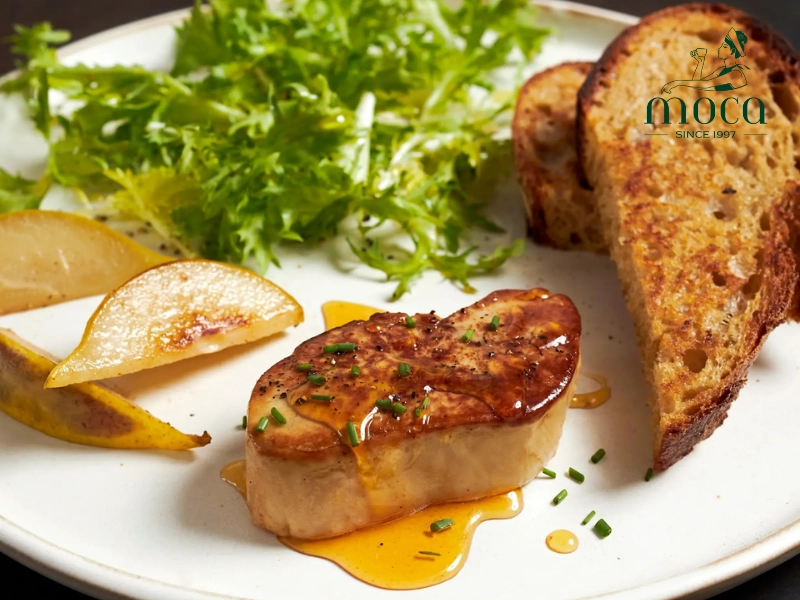
Foie gras: a symphony of richness and refinement, crafted to melt on the palate.
2. Classic preparations and applications in fine dining
The application of foie gras in fine dining is a study in precision and tradition. Chefs have developed several classic methods to showcase its unique properties, each requiring immense skill.
2.1. Pan-seared foie gras
Perhaps the most iconic preparation, pan-seared foie gras involves a quick, high-heat sear that creates a perfectly crisp, caramelized exterior while leaving the interior warm, molten, and creamy. The success of this dish lies in this textural contrast.
The richness of seared foie gras demands balance, which is often achieved with sweet and acidic components. Classic accompaniments include fruit compotes (such as fig or cherry), a drizzle of aged balsamic glaze, and a slice of toasted brioche to provide a sturdy, absorbent base.
A quintessential fine dining dish is the Tournedos Rossini. This opulent creation features a filet mignon cooked to perfection, topped with a freshly pan-seared foie gras escalope, and finished with shavings of black truffle and a rich Madeira wine sauce. Here, the foie gras does not just sit atop the beef; it melts into it, creating a sauce of unparalleled richness and elevating the entire dish to legendary status.
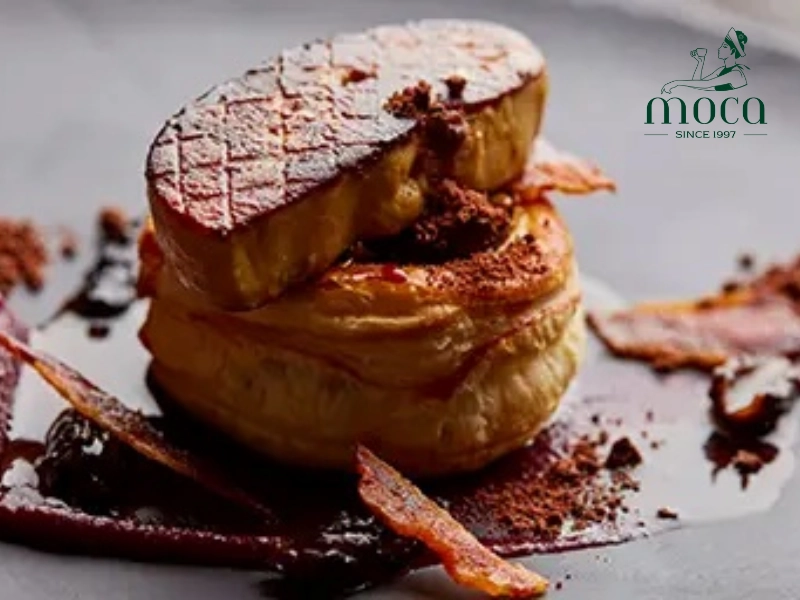
Pan-seared foie gras: where crisp meets creamy, and indulgence becomes iconic.
2.2. Foie gras terrine and torchon
These cold preparations showcase the liver’s smooth, pâté-like consistency and deep flavor. A foie gras terrine is made by seasoning and pressing the liver into a mold, then cooking it slowly in a water bath. A foie gras torchon, named for the dish towel it is traditionally wrapped in, involves rolling the seasoned liver into a tight cylinder and gently poaching it.
Both methods are exacting. The liver must be meticulously deveined, and the cooking temperature must be controlled with absolute precision to prevent the fat from rendering out, which would result in a grainy texture. Served chilled in elegant slices, these preparations are often featured at the start of multi-course tasting menus, typically accompanied by fruit preserves and toasted artisan bread.
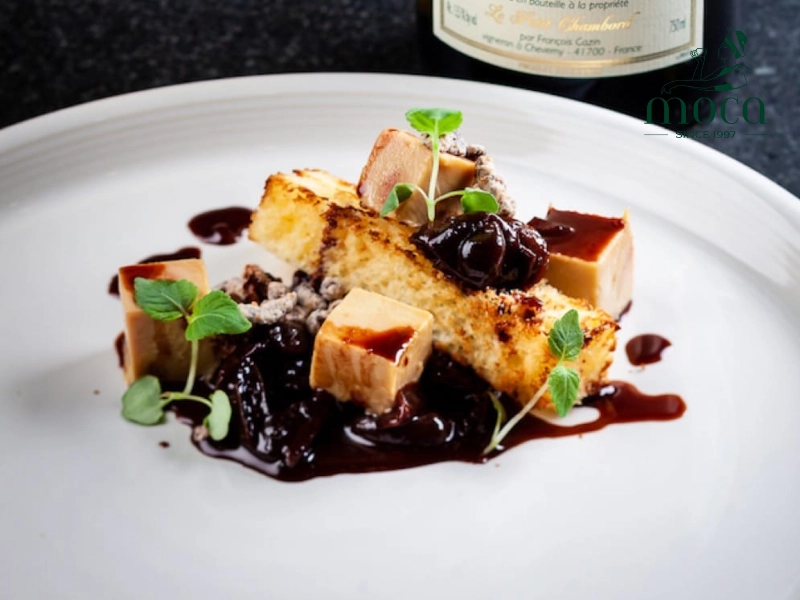
Foie gras terrine and torchon: chilled elegance, crafted with precision and patience.
2.3. Foie gras as an ingredient
Beyond being the centerpiece, foie gras is a powerful supporting actor. Its high fat content and savory depth make it an exceptional enrichment for other dishes.
In classical French cuisine, small amounts of foie gras are often whisked into sauces to add body, sheen, and a luxurious finish. It can be used as a stuffing for poultry like quail or chicken, infusing the meat with moisture and flavor from within. In a Rossini-style beef preparation, its role is explicit, but in many other dishes, its presence is a secret weapon used by chefs to build layers of unforgettable flavor.
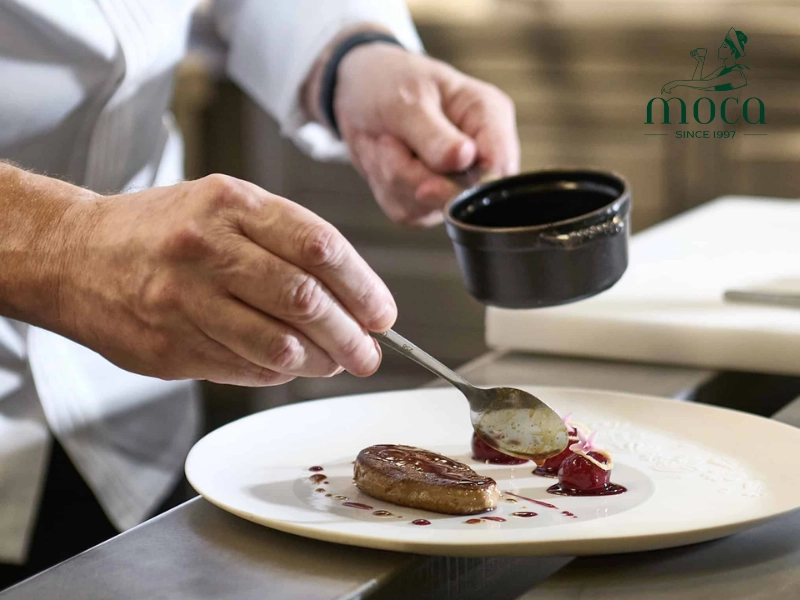
Foie gras as the secret ingredient—elevating sauces, stuffing, and flavor to new heights.
3. The Ethical Landscape: Controversy and sustainability
A comprehensive discussion of foie gras in fine dining must address the ethical concerns surrounding its production. At Moca Dining, we believe transparency and informed choice are paramount to the modern dining experience.
- The practice of garbage: The primary ethical objection is directed at garbage, the practice of force-feeding ducks or geese to enlarge their livers. Animal welfare advocates argue that this process is unnatural and causes distress, making it an inhumane practice. This debate has led to significant regulatory action and a search for more humane alternatives.
- Regulatory responses and bans: In response to these concerns, the production and/or sale of traditional foie gras have been banned or restricted in numerous regions, including California, New York City, the United Kingdom (production ban), India, and several other countries. These regulations have a direct impact on haute cuisine, forcing chefs to either remove the ingredient from their menus or seek out producers who operate under different, more humane standards.
- Ethical sourcing and alternatives: The culinary world is actively responding to these challenges.
- Ethical Foie Gras: A small number of producers, particularly in Spain, have developed methods for producing "natural" or ethical foie gras. They raise geese in a free-range environment and take advantage of their natural instinct to gorge in preparation for winter migration, thereby producing a fatty liver without the use of gavage.
- Plant-Based Alternatives: Innovation has also led to the rise of high-quality vegan substitutes. These "faux gras" products, often crafted from cashews, mushrooms, lentils, and truffle oil, are designed to mimic the rich, decadent experience of traditional foie gras. Culinary science continues to push boundaries, with ongoing research into cell-cultured alternatives that could one day replicate the ingredient without any animal involvement.
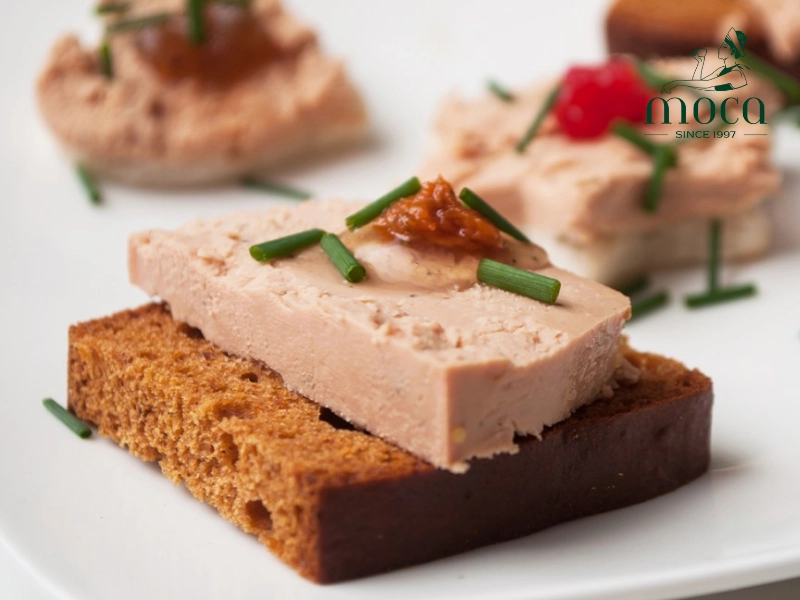
At Moca Dining, we believe excellence includes ethics—offering foie gras choices grounded in transparency, sustainability, and compassion.
4. Pairing foie gras: Enhancing the experience
The final element of the foie gras experience is the art of pairing, which aims to balance and enhance its dominant characteristics.
- Wine pairings: The classic Sauternes pairing is legendary for a reason; the honeyed sweetness and acidity of this dessert wine cut through the richness of the foie gras beautifully. Other excellent choices include sweet wines like Tokaji or a late-harvest Riesling. For a contrasting pairing, a crisp Champagne offers bubbles and acidity that cleanse the palate between bites.
- Culinary complements: A successful pairing hinges on a balance of sweetness, acidity, and texture. Sweet elements like figs, berries, or apple reductions complement its flavor. Acidity from vinegars or pickled vegetables provides a necessary counterpoint to the fat. Finally, textural contrast from toasted brioche, crunchy nuts, or seeds makes each bite more dynamic.
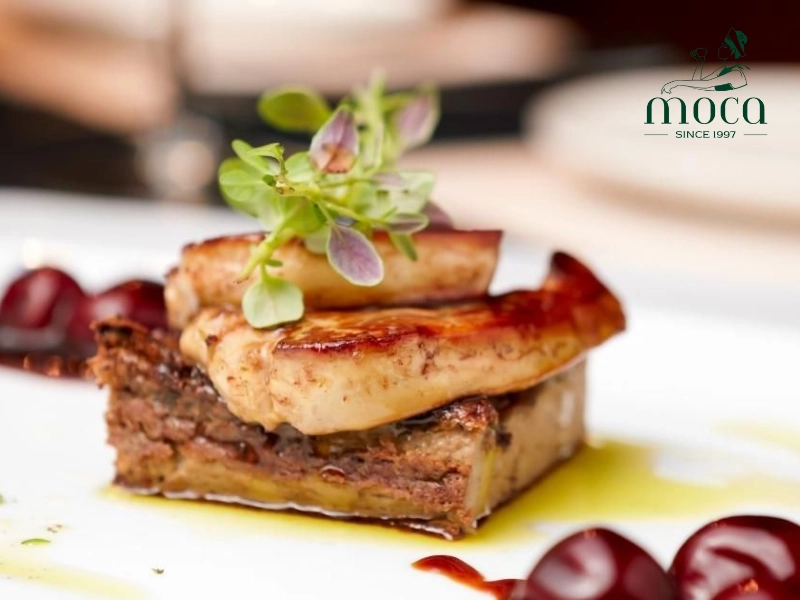
Foie gras shines brightest when perfectly paired—with sweet wines, crisp textures, and a touch of acidity.
Foie gras remains one of the most compelling ingredients in a chef's arsenal—a product capable of delivering an unmatched experience of luxury and flavor. Yet, its place in the modern culinary landscape is complex, defined equally by its celebrated history and the significant ethical questions surrounding it. The future of foie gras in fine dining will undoubtedly be shaped by a continued commitment to ethical sourcing, culinary innovation, and a deeper respect for the choices of the informed diner.
At Moca Dining, we are dedicated to this journey of culinary excellence and responsible gastronomy. We invite you to explore our thoughtfully curated menu, where tradition and innovation meet, and every dish tells a story of purpose and passion. Secure your reservation today and be part of a dining experience that inspires and delights.







